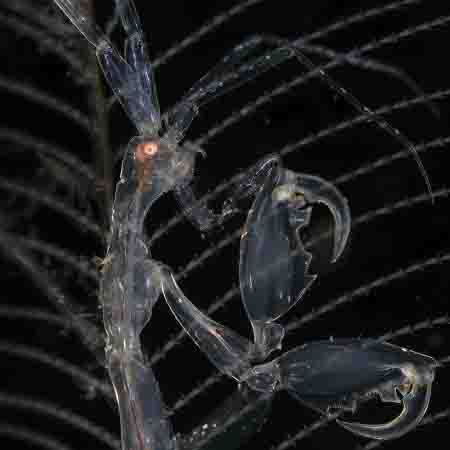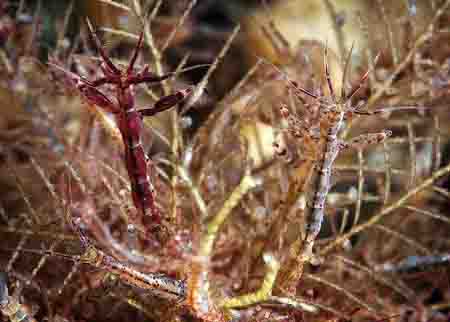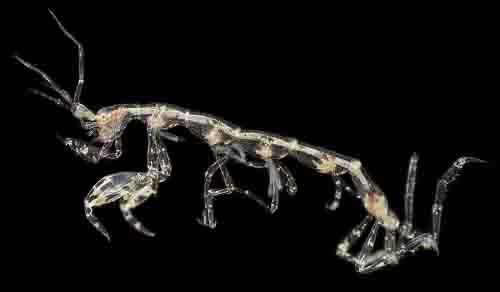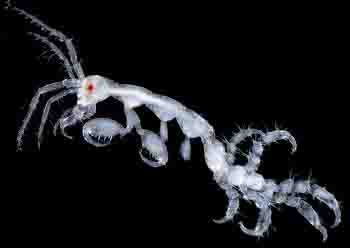Caprellidae (Skeleton shrinp) looks like an alien and has a translucent body, so it looks like a rare creature, but it is a member of the shrimp and crab family that can be found everywhere, including on the surface of seaweed. This creature is a close species of the Phronima and is classified in the Amphipoda group. The shape of the crack is strange, but to enthusiasts it seems cute.
ワレカラはエイリアンの様な外観で体は半透明ですから珍しい生き物の様に見えますが、海藻の表面など、どこにでもいるエビ・カニの仲間です。この生き物はタルマワシの近種で短脚目に分類されます。ワレカラは奇妙な形ですがマニアにはキモカワイイようです。ワレカラは英語でSkeleton shrinpです。
Phronima タルマワシ https://www.mitell-a.com/787/

At university, I was doing research on barnacles, so when I peeled off oysters and barnacles, I could easily find the Caprellidae , which were familiar creatures to me. However, it is a small creature that is difficult to find, with a body length of 1 to 2 cm. Also, their bodies are translucent and look like plastic trash, so you won’t even notice they are living creatures.
大学ではフジツボの研究をしていたのでカキやフジツボなどを剥がすとワレカラを簡単に見つけることができ身近な生き物でした。しかしワレカラの体長は1~2cmと小さく見つけにくい生き物です。また体が半透明でプラスチックごみの様に見えるので生き物とは気づかないでしょう。

Caprellidae’s body consists mostly of its head and chest, so it can only bend and stretch its body. These creatures cannot move underwater by themselves, so they live on the surface of seaweed and barnacles, eating detritus (garbage, organic matter) and algae.
ワレカラは身体の大部分が頭部および胸部で構成されるため身体を屈伸させる事しかできません。この生き物は単独で水中を移動することはできないので海藻の表面やフジツボの表面でデトリスタ(ゴミ、有機物)や藻類を食べて生活しています。

A common theory is that when the Caprellidae was landed still attached to seaweed, its exoskeleton dried and cracked, which is why it was called the warekara. In the old days, Japanese people made salt by boiling seaweeds such as eelgrass. At that time, the Caprellidae were also burned, and their body would have burst open.
ワレカラは海藻に付着したまま水揚げされた時、外骨格が乾燥して割れることから割れ殻(ワレカラ)と呼ばれたという説が一般的です。昔の日本人はアマモなどの海草を湯出て塩を作っていました。その時ワレカラも火で焼かれ、ワレカラの殻がはじいたことでしょう。





